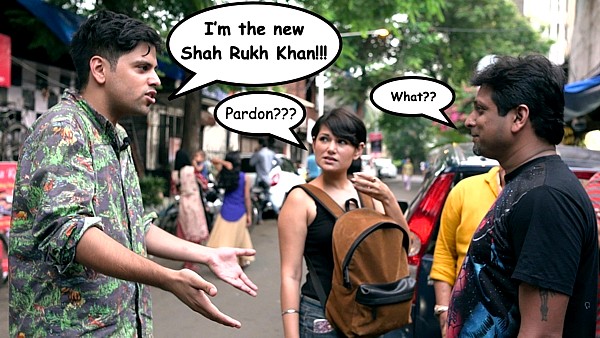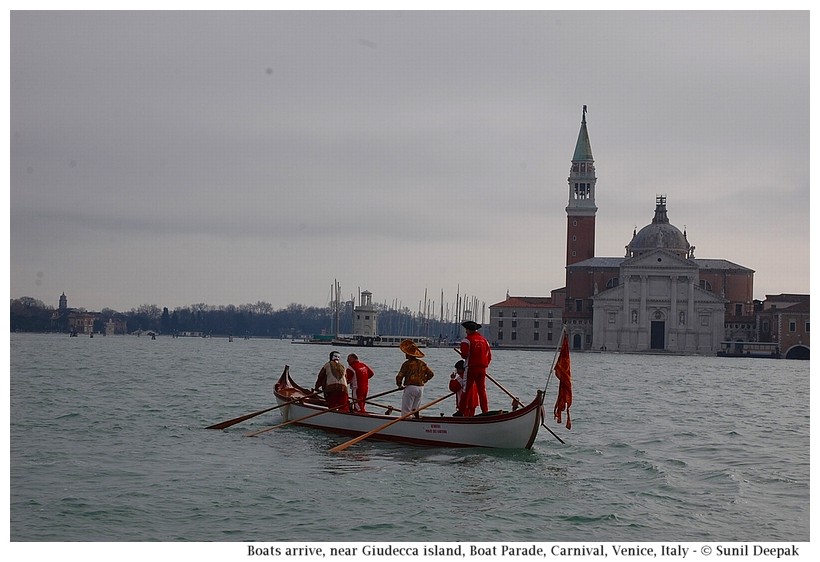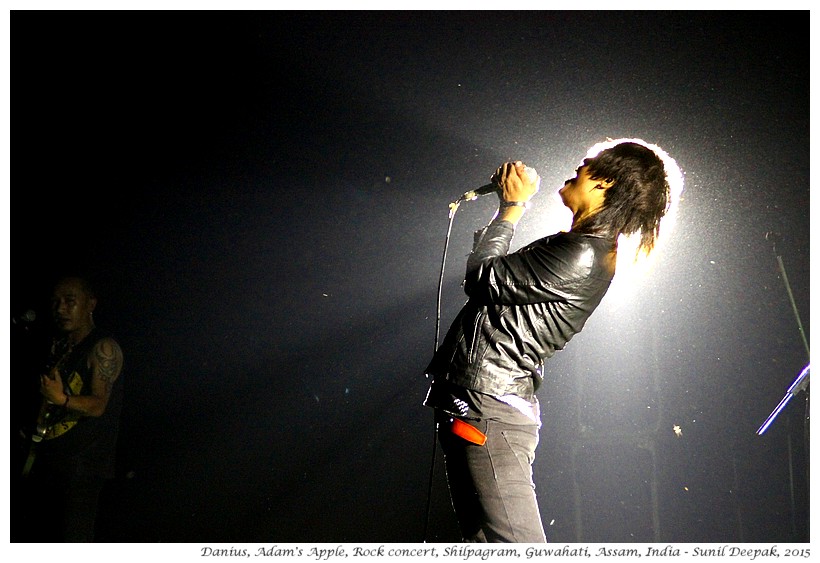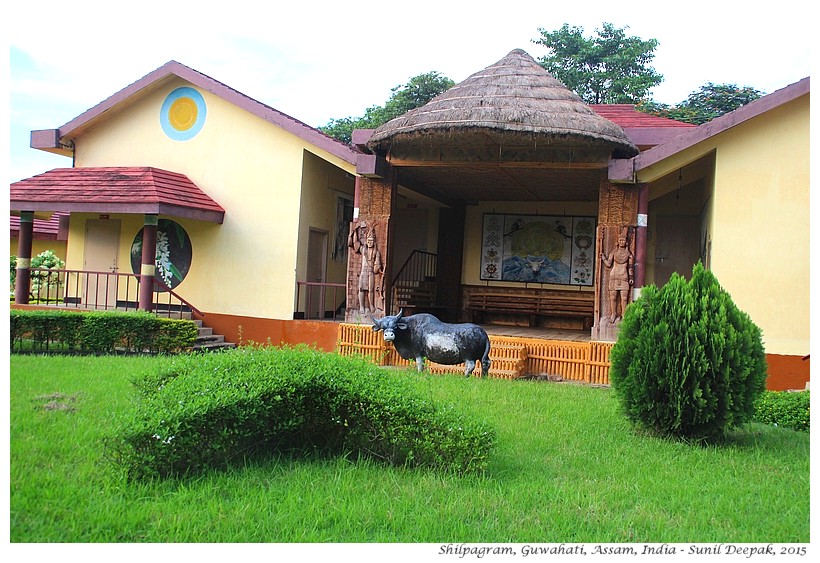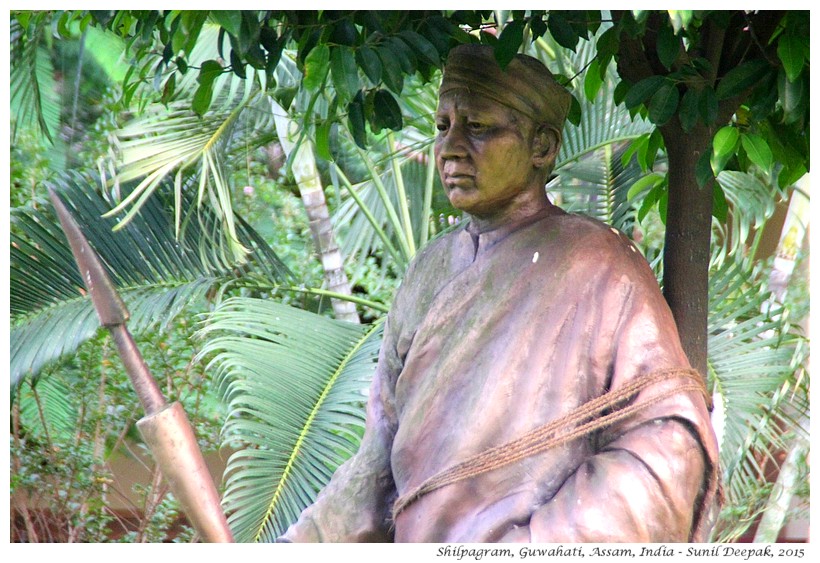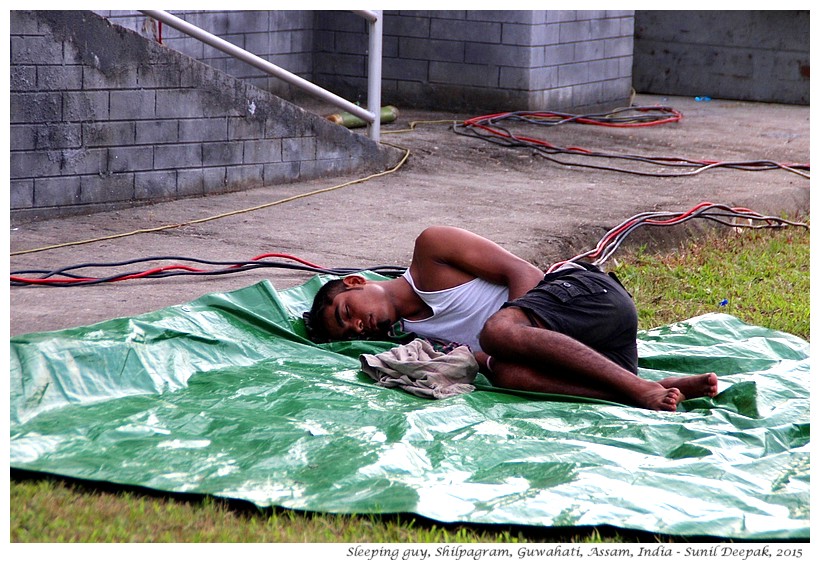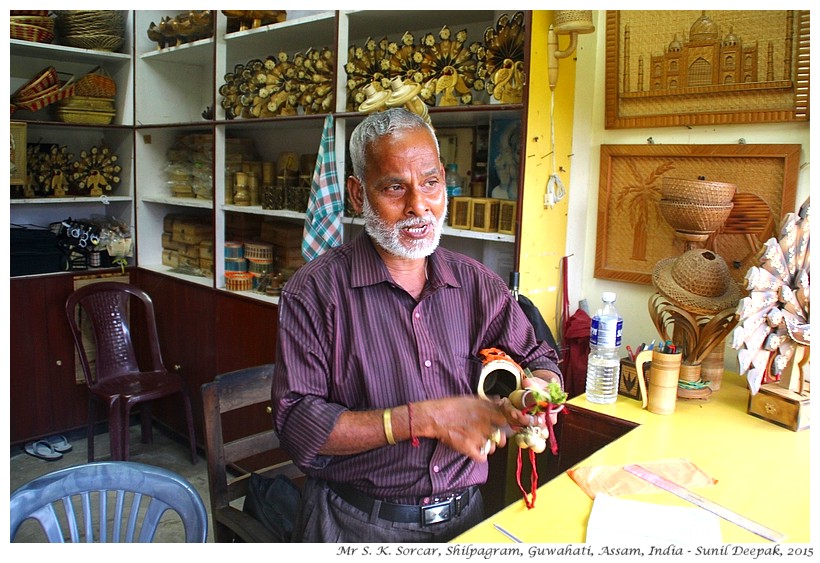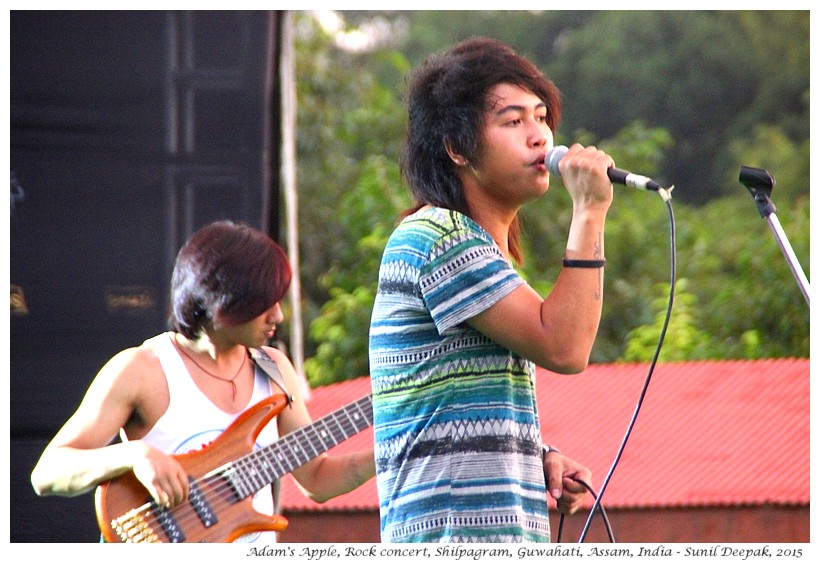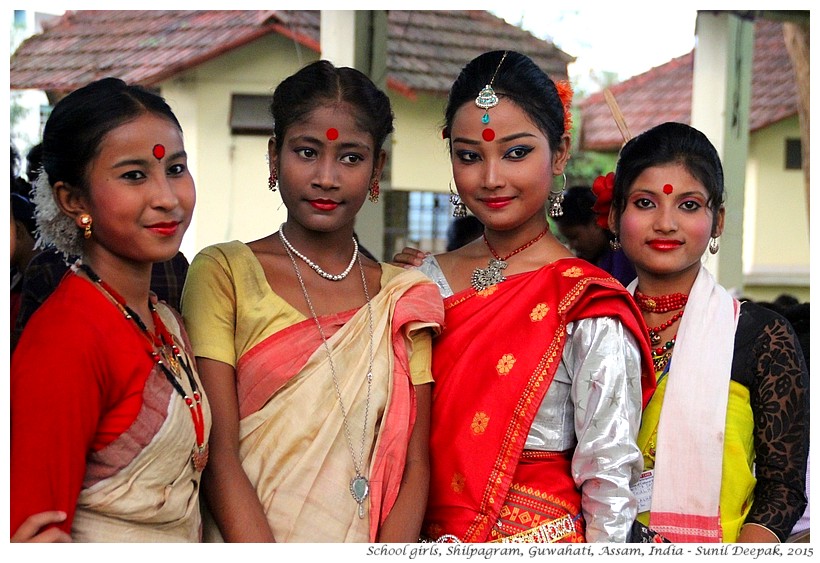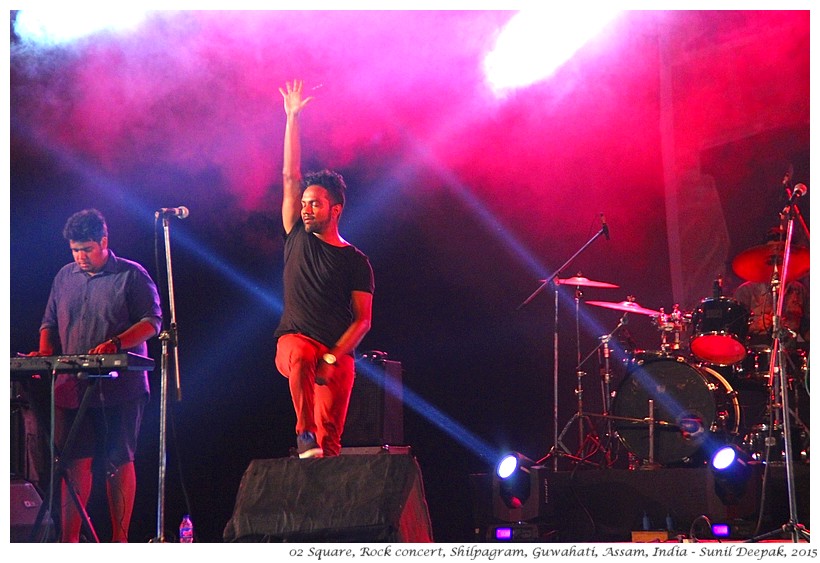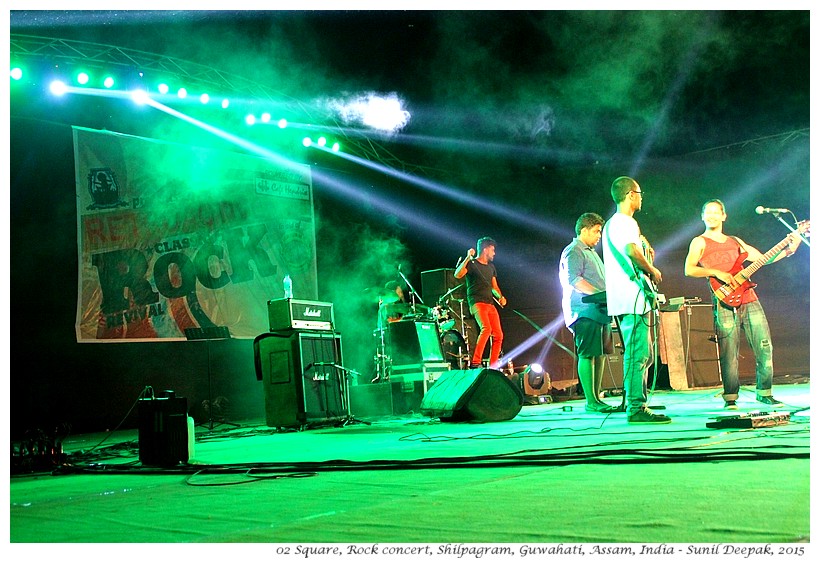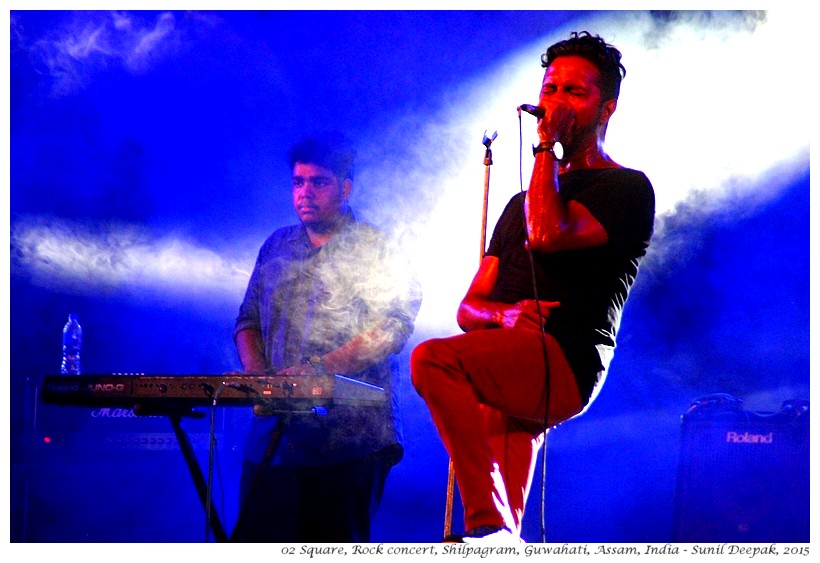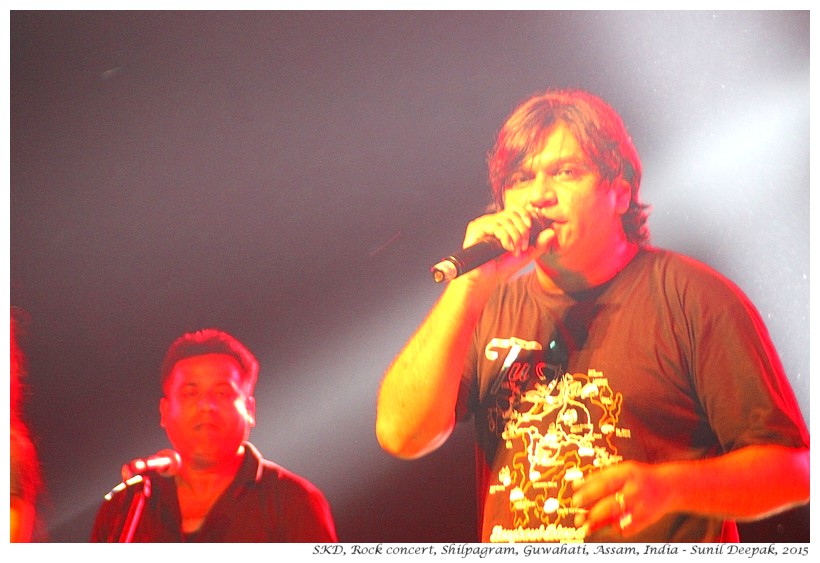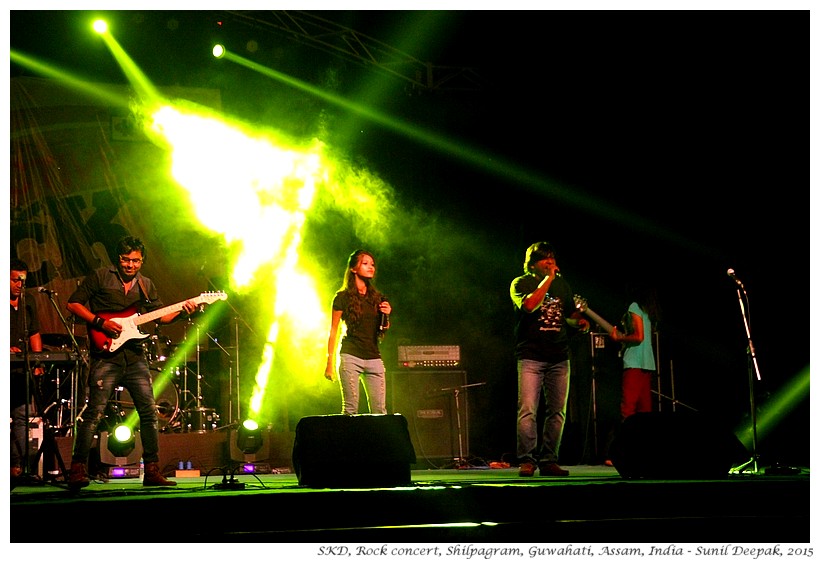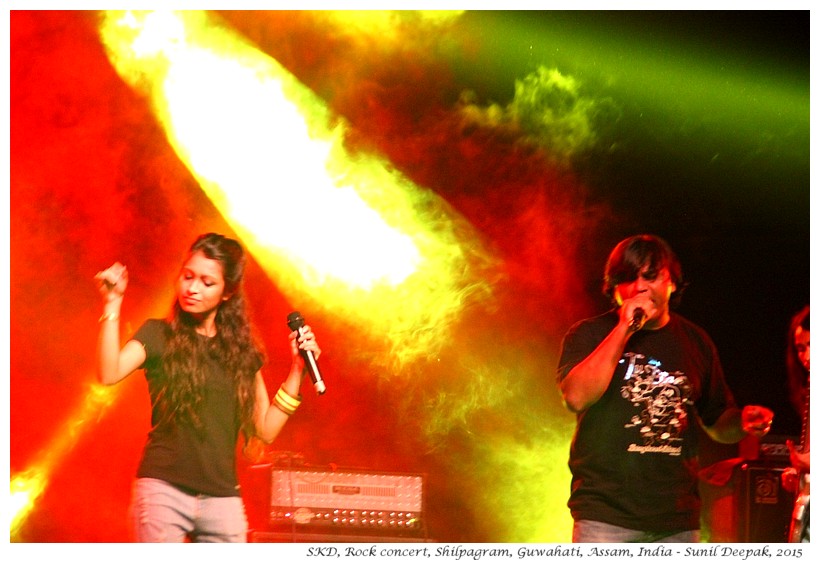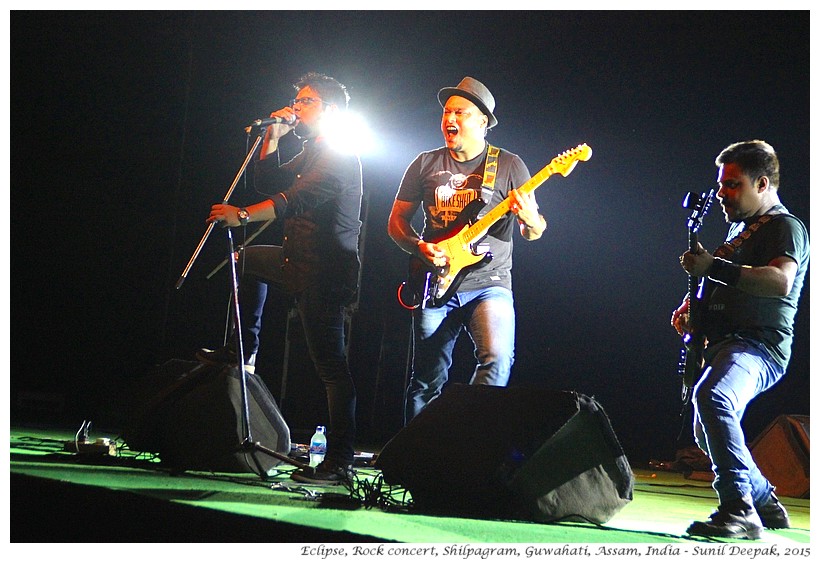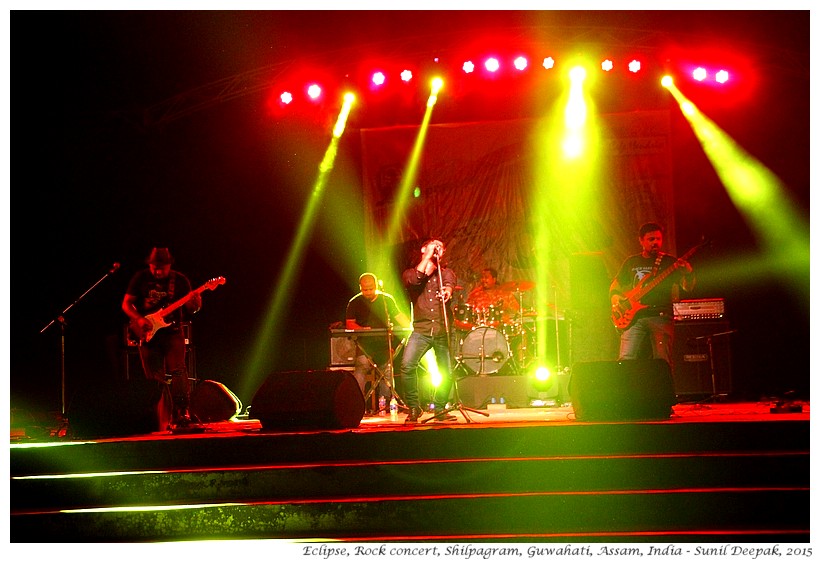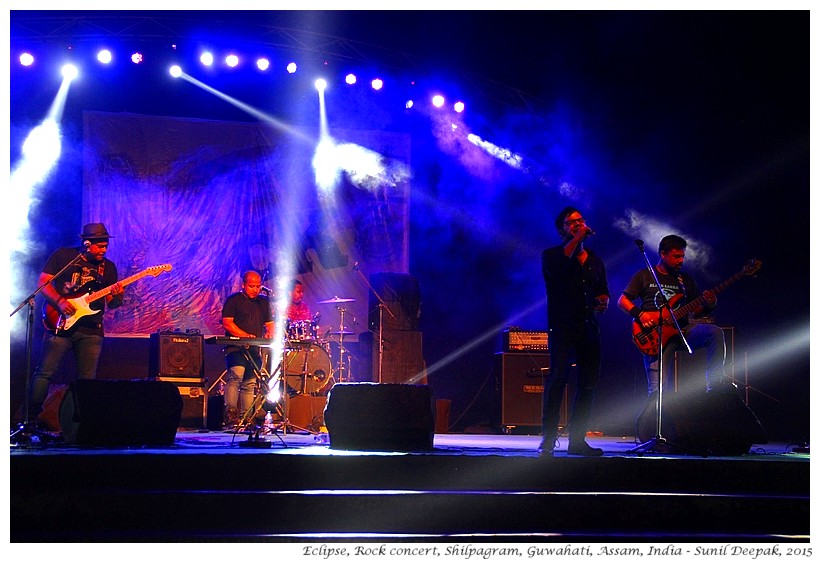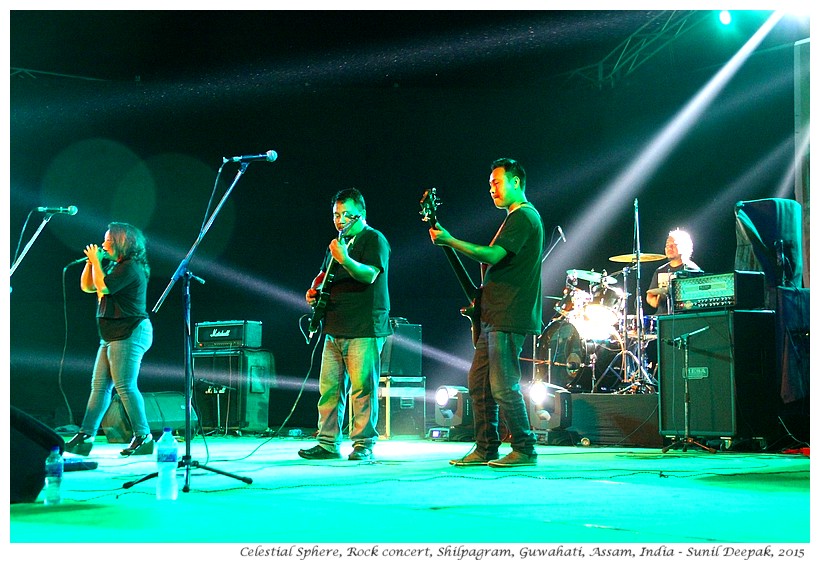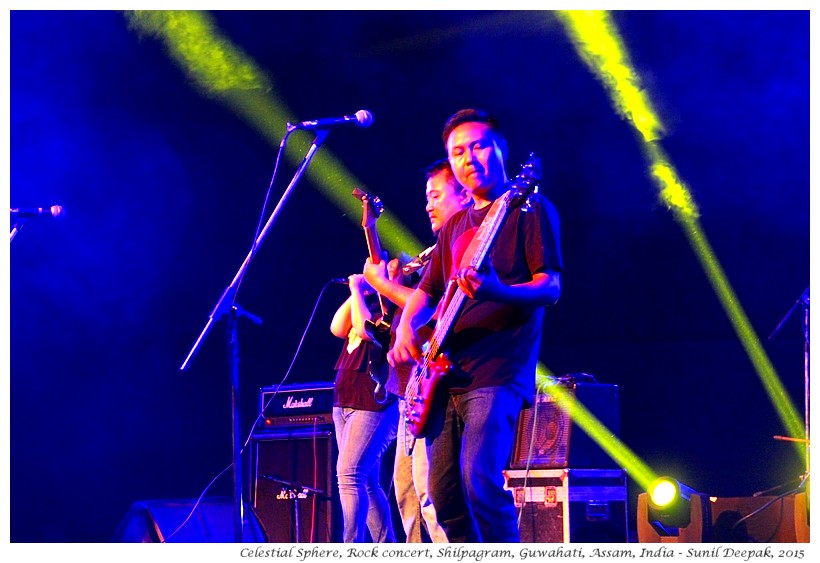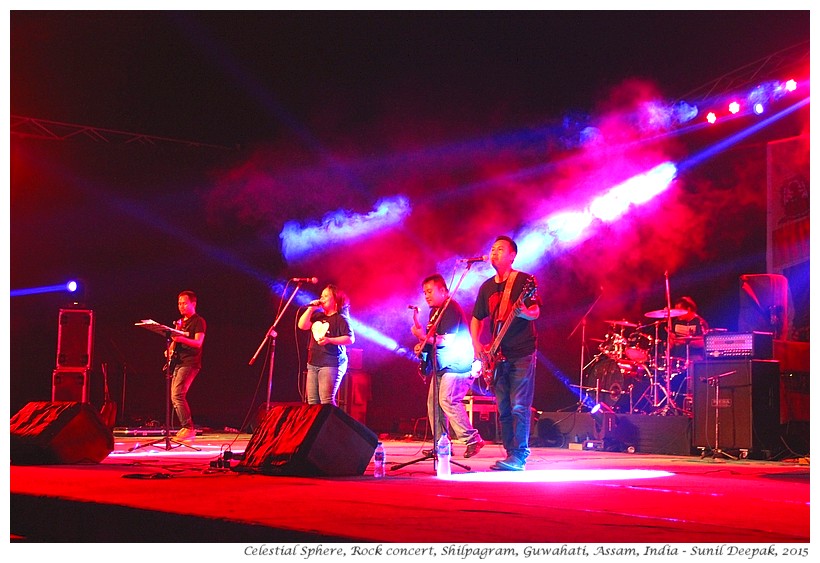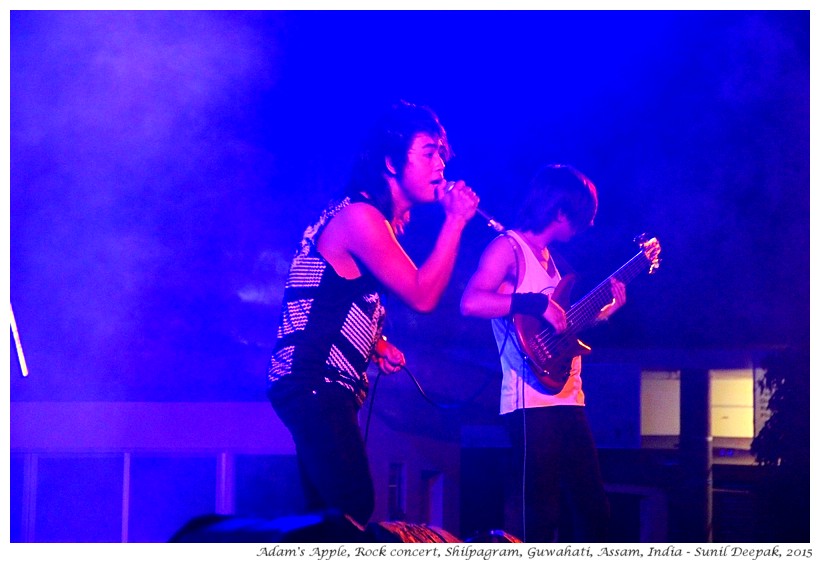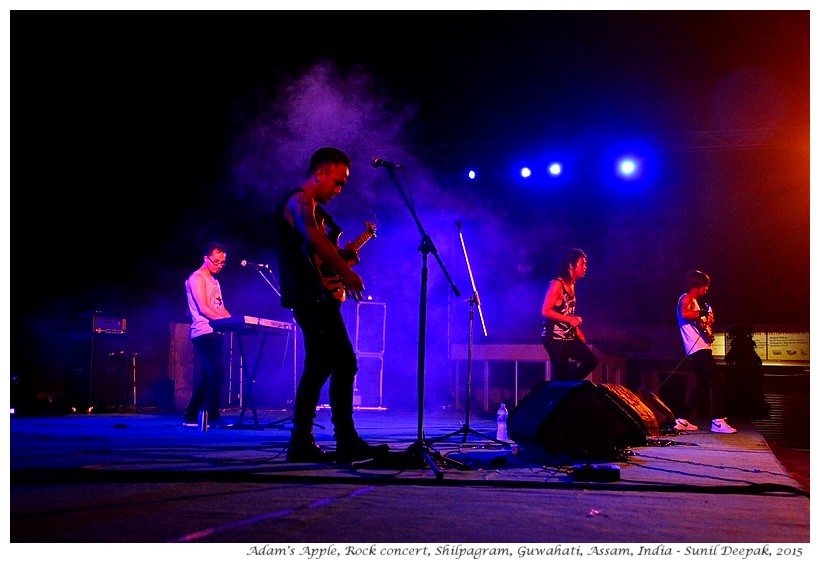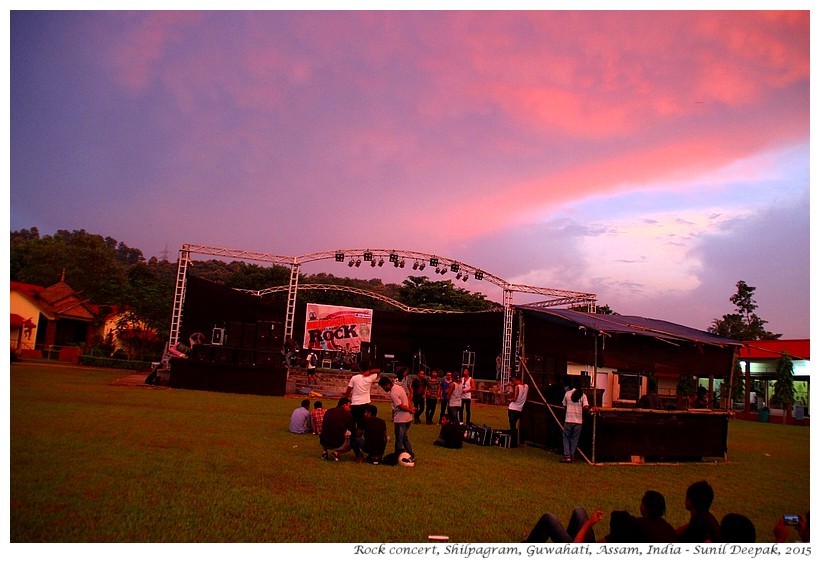Kadakh
Kadakh was the opening film of the festival, directed by Rajat Kapoor. It is a black comedy centred around a dead body in an upper-middle class drawing room in Mumbai, which is full of guests for a Diwali party.Sunil (Ranvir Shorey) is the owner of the house while the dead guy is Raghav, husband of his office colleague Chhaya, with whom he is having an affair. Raghav has discovered their affair and comes to talk to Sunil. He is trying to be mature about it, but continues to get too angry to control himself and during one such loss-of-control moments, shoots himself. Soon Sunil's wife (Manasi Multani) comes back home and finds her husband with Raghav's corpse in their drawing room. He confesses his affair but there is no time to deal with the marital infidelity as they know that soon their guests for the Diwali party are going to arrive. So the husband and wife hide the dead body in a box, cover it with tapestry and get ready to welcome the guests.
I do not like the genre of dark comedy, but the film is well made and well-acted. All the actors are good. I especially liked Manasi Multani, who plays Sunil's wife Malti and Palomi Ghosh, who plays Chhaya. I also thought the guy playing Raghav (Chandrachoor Rai) was good in his brief role.
The Newly Weds, short film (5 min.) by Prataya Saha
You can watch this short film on YouTube. The film has a young man (Mahesh Gowda) and his wife (Suvin Valson) and it looks at the way they relate to each other, mediated by technology. When together, they hardly talk to each other and their eyes are constantly on their mobile phones and laptop screens. At night, a laptop stays in the bed between them. However, they expresses their love in the messages they write to each other, in which they open their hearts.The tiny film presents the role of tech in a young couple's life as a kind of caricature. I felt that it could have been more relatable as a depiction of a long-married couple who does not have much left to say to each other. It felt a bit unrealistic for a young newly married couple, because it seemed to ignore their need for physical touch and sex. Their messages express a yearning, which is inexplicably missing from their real lives.
Berlin to Bombay, documentary film, 51 min. by Marco Hulser
Though film's storyline is an old theme, Abu has an expressive face and he comes across very well with his ingenuity, hope and dreams.
While the film ended, I was thinking of today's YouTube and TikTok stars. Now, people with dreams of making it in Bollywood, have some alternative pathways to become famous, even if that fame does not last very long. I think that I would like to watch a similar documentary exploring the worlds of the YouTube-TikTok stars.
The GesheMa is Born, Documentary, 56 min., by Malati Rao
Geshe Ma is the title of a learned Buddhist nun who has reached the highest level of religious knowledge. Rao's documentary is a glimpse into the hidden world of Buddhist nuns. I liked it because it showed a world which was unfamiliar to me.The film follows a group of nuns in a monastery in Nepal who became the first group of women admitted to the Buddhist theological studies. The film focuses on the story of Namdol Phuntsok, who had earned the top marks in these studies and received the title of Geshe Ma in 2016.
The film moves forward and backward in time, with some interviews and unobtrusive observation of the lives of the Buddhist nuns. They talk about the setting up of the first nunnery. It looks at their celibate lives, their shaving of heads and their determined animation during theological discussions, where a raised leg-movement and clapping of hands in stereotypical gestures, looked like a dance to me.
GesheMa Namdol talks about her childhood and her family's opposition to her idea of becoming a nun, her desire for studying the Buddhist religious texts and how they must argue and debate their ideas and defend them against questions. The film concludes with the group of the nuns holding the coveted yellow head-dresses in their hands, which are a visible sign of their learning, walking in the room full of monks. They all don those yellow head-dresses, signifying a new beginning of the role of the women leadership in Buddhism.
Buddha of the Chadar, 28 Min. by Jean Whitaker
This film can also be watched on internet. It is about a father and son from Ladakh making a long winter journey on the frozen Zanskar River - a route known as the Chadar. They carry a heavy gold-plated statue of Buddha, which they plan to offer to a Buddhist monastery located at the top of the hill near their village.The film has beautiful photography and makes you reflect on the human urge to choose a tough journey as a part of a spiritual quest.
Silence in the Wind, 13 min. by Gautam Baruah and Ballav Prajnyan
This short film is about a father remembering his son, his desire to see him married and his initial rejection when he discovers that his son is gay. His initial reaction is of rejection. Then he remembers the day when his young son had risked drowning in the river and his desperation. The memory of that desperation helps him to say to his son that he does not understand but he will accept.It is a beautiful film.
The Ashram Children, 67 min., by Jonathan Ofek
India is seen as the land of spirituality. It has many famous gurus with their ashrams, and followers coming from all over the world to seek their guidance. This film shows a hidden aspect of this spiritual quest - the feelings of the expat children about those Gurus.The director of this film, Jonathan is from Israel and he feels scarred by his childhood experiences in an ashram in India. He feels that it was a cult which had gripped his parents. His parents, especially his mother, do not take his complaints very seriously - for her, it was not a cult and she was only going to the ashram for some months every year.
This film forced me to see how the spirituality-and-guru industry of India can be perceived by young children who are pulled in to this experience by their parents. I had never thought about it before in these terms. For me, many of the ashrams and their jet setting Gurus, who run their spirituality businesses like money-making exercises, are persons who profit from human frailties. At the same time, I believe that some of the non-commercial persons can be great spiritual teachers.
Conclusions
There were some other short and documentary films from the festival which I had watched but they were similar in terms of themes and treatment to others that I had seen earlier, so I am not writing about those.In the past RtoR festival had been an opportunity for me to meet and talk to persons from the world of Indian films - persons like Onir, Rahul Bose, Aparna Sen and even Amitabh Bachchan. That was no longer possible with an online festival. I hope that in future, after the end of the Covid-19 pandemic, River to River festival will continue to offer the possibility of online participation.

